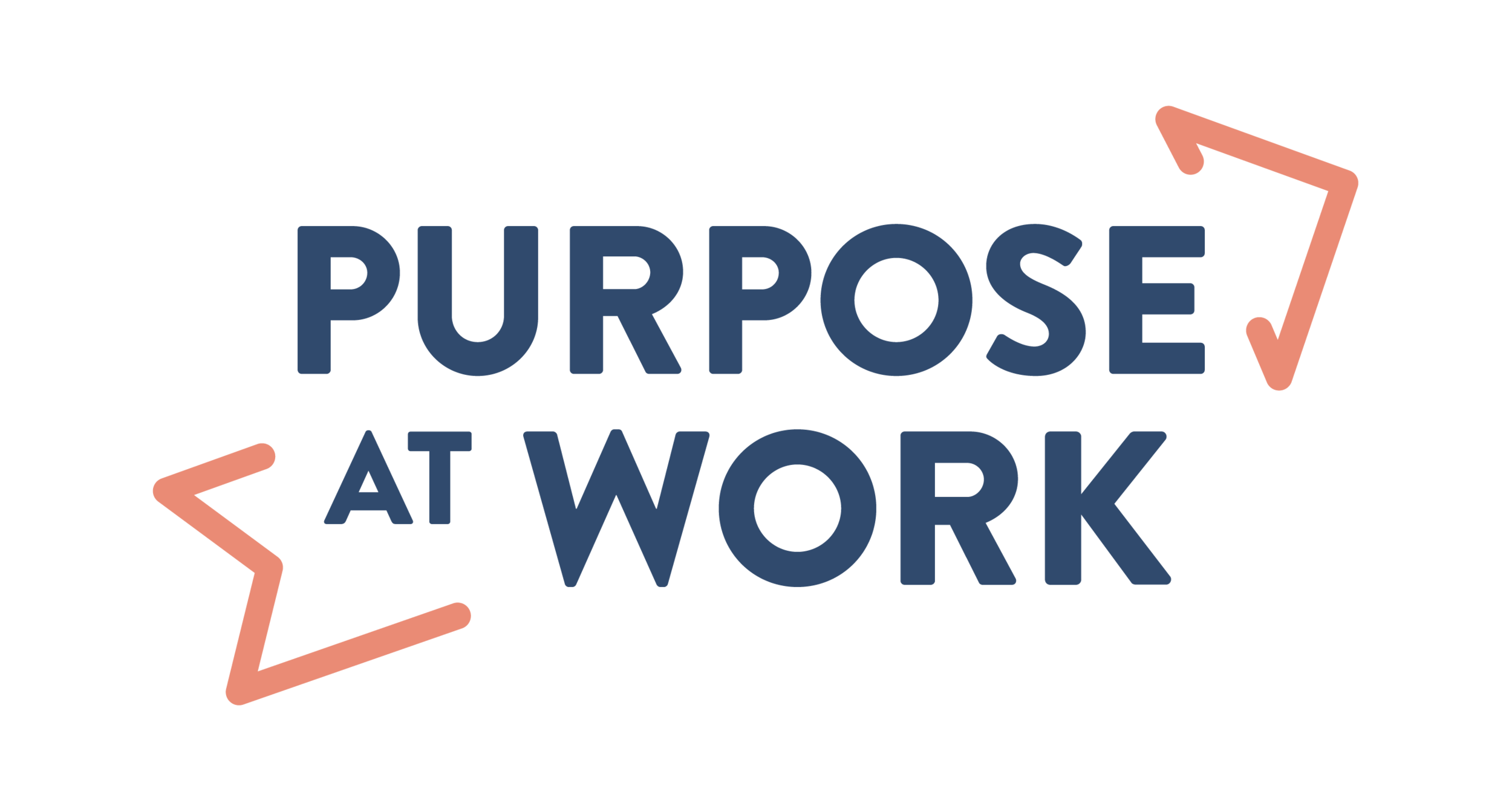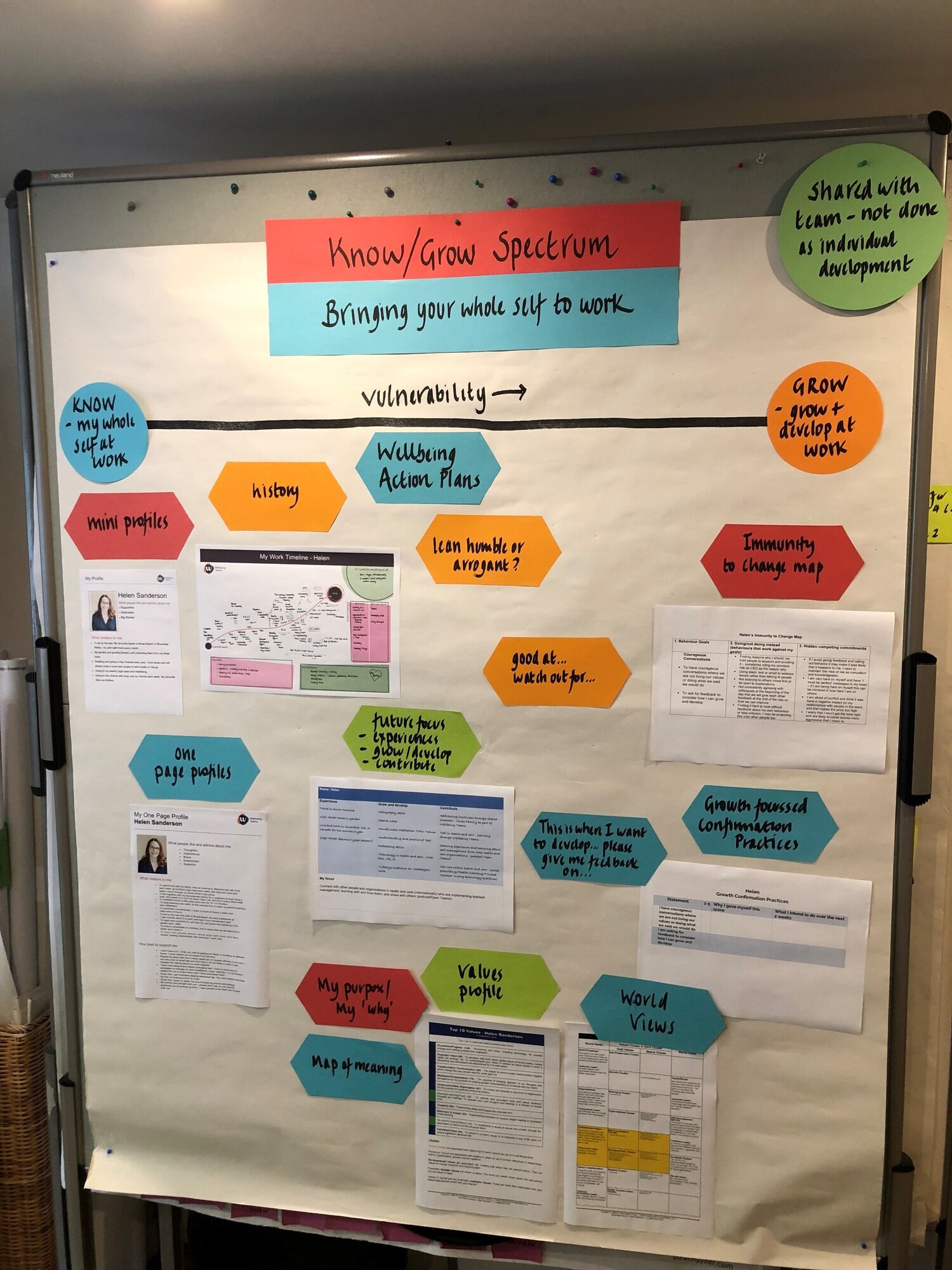What purpose-driven practices really look like
Not only do purpose-driven organisations have a clearly articulated organisational purpose and purpose-driven employees, they also organise work and align work practices to their purpose and values. By contrast, system-driven organisations organise their work and work practices in ways that often bother or even burden staff to the extent that they cannot fully focus on achieving the organisational purpose. The animations below illustrate this difference.
WH_animaties.PNG
Source: Adapted from Lost in Control by Wouter Hart
Wellbeing Teams in the UK is a clear and shining example of a purpose-driven organisation that has put conscious effort into aligning the design of their work practices with their organisational purpose. At our Purpose in Practice event on 9 September 2019 Helen Sanderson from Wellbeing Teams shared the most impactful of these practices.
She briefly introduced Wellbeing Teams as neighbourhood-based self-organising teams that deliberately invite team members to bring their whole self to work. Because these teams are self-organising, it is important that they feel a high level of shared accountability for how they work. Helen shared practices that work for Wellbeing Teams but can also have real benefits for teams in more traditional hierarchical structures.
Practices to strengthen shared accountability
For a team to feel a sense of shared accountability for how they work, they need clarity on what is expected of them as team members. This does not only relate to the results and outcome expectations of the organisation, but also to how the team holds each other to account for how they live and practice their shared values. By developing a team agreement, a team collectively sets out how they intend to work together.
Our workshop attendees practiced making a team agreement (see example below) at their table and found that they could come to agreements with people they had not met before simply by using their own work experience. This process is therefore highly valuable for both new and existing teams. It captures the collective knowledge of team members about what works well and what didn’t in the past and turns this into agreements that guide how they will work moving forward.
Team agreement example.PNG
Having a team agreement in place improves the odds that a second component of shared accountability takes effect: giving and receiving feedback. By being able to refer to a set of agreements, team members can give feedback based on the shared values of the group. To further strengthen staff feedback capabilities, Wellbeing Teams make a point of training staff in the use of compassionate or non-violent communication.
This approach teaches people to give feedback without placing blame on the person receiving feedback. The feedback is based on observable behaviour and formulated as a request to the receiver to do things differently in the future to accommodate a need from the person giving feedback. It allows the receiver to deny the request and opens up conversation on how both parties can come to a satisfactory solution.
A third practice used to strengthen the shared accountability of the teams is the review of personal performance with colleagues. This practice recognises that team members are responsible for the performance of the team and that they see each other’s performance and the consequences of their behaviour up close on a day to day basis. Wellbeing Teams uses a buddy-system to ensure each team member has a peer who helps them reflect on their performance, provides support and challenges them to continuously develop and grow.
To guide the performance review between buddies, Wellbeing Teams uses confirmation practices. This alternative to conventional performance management aims to help people to hold themselves to account on delivering on the purpose of their role. It starts with developing a limited set of statements that capture what success looks like if someone achieves the purpose of their role. They then score themselves regularly on how well these statements match their performance and discuss with their buddy what they intend to do in the next week or fortnight to improve.
Team meetings
Effective team meetings are essential for self-organising teams. Organisations working with these teams need excellent team meeting practices and Wellbeing Teams is no exception. Teams in more conventional organisational settings can learn a lot from this to make their meetings more effective (and enjoyable).
Helen led a simulation of a team meeting with seven volunteers from the audience. It was clear that the meeting structure was designed with the purpose and values of Wellbeing Teams in mind. Take for example the check-in process in which each of the participants in the simulation placed a sticky note with their initials next to the categories in the picture below to indicate how they felt at the time. This aligns with the focus on wellbeing for staff, putting emphasis on recognising that people might not be at their best every day. The wellbeing of the people Wellbeing Teams supports is mapped in a similar fashion with each team member placing a sticky note with the initials of the people they support on a scale of ‘On track’, ‘A bit off track’ and ‘Off track’ based on their overall wellbeing. This is followed by a discussion on how the team can get people who are (a bit) off track back to a place of wellbeing.
Wellbeing check in.JPG
Each team member is then invited to raise issues or ideas for improvement they would like the team to discuss. This could be issues or improvements regarding the support of the people in their service, but also on the functioning of the team, what the team needs, how they are working together etc. The team then discusses possible solutions to issues or the proposed improvements to come to a joint decision on what they will do about it.
Another practical take-away was the use of ‘What if’-cards to stimulate conversation and the sharing of ideas on how to deal with tricky situations on the job. The one-sentence scenarios on the cards can relate to situations that have caused complaints or even incidents in the past, team members breaching the team agreement or organisational values and other dilemmas (e.g. What if X does Y, how do we deal with that? or, What if A keeps happening when B is on shift, how do we respond?). These cards provide a quick and easy way for the team to strengthen and align their daily practice in a team meeting.
The check-out process used in team meetings at Wellbeing Teams is again a deliberate process aimed at helping the team to reflect on their meeting and what they could improve (see below). Team members are asked to rate the meeting based on eight short statements and then take a few minutes to discuss their collective scores to find ways they can improve their next meeting.
Check-out.PNG
Bringing your whole self to work
To show us the different practices that encourage people to bring their whole self to work, Helen introduced the Know/Grow spectrum (see picture). On this spectrum she placed different tools and practices based on the level of openness and vulnerability needed to share these with your team and ask them to support you. On the one end she placed those that support staff to describe what matters to them at work and how they would like to be supported to do their best work. The tools on the other end of the spectrum enables the sharing of personal growth and development objectives with the team so they can support each other to become even better versions of themselves.
Know-Grow spectrum.jpg
Using these tools requires an increasing level of psychological safety as you move up the Know/Grow spectrum. This needs time to develop within a team and therefore the use of these tools should match the psychological safety felt within the team.
What did we learn?
It was such an inspiring day! The picture below shows what the different tables in the room reported as their key learnings. Many felt excited to go back to their workplace and experiment with some of the presented practices, some even tried to adopt Helen on the spot as their company mascot! Others were struck by how different but also simple and effective the practices were and recognised the need for structure to enable staff autonomy. This once more underlines that organisations looking to really empower their staff, cannot just hand them more responsibility and expect results. It only works with the support of well-designed structures and processes that often go beyond and outside of conventional management practices.
Learned.PNG
Interested to learn more about how you too can develop effective purpose-driven work practices with your teams? Contact us, we are always happy to have a chat.







